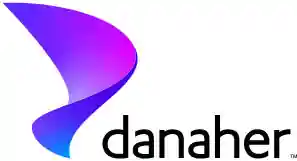An Automotive Smart Display is an advanced interface found in cars that gives drivers and passengers access to entertainment, information, and control features. An automotive smart display functions as a multipurpose interface that unifies and controls various facets of a car's operation and driver experience. It offers a central location for controlling the infotainment system of the car, allowing users to access apps and services, integrate their smartphones and playback audio and video. It also serves as a control panel for the temperature control system and driver assistance features like adaptive cruise control and lane-keeping assistance. Automotive smart displays improve driving ease, safety, and overall enjoyment by combining various features into a single, easily navigable interface.
Global Automotive Smart Display Market Driving Factors and Challenges
Driving Factors- With user profiles and customisable interfaces, automotive smart displays enable further personalization and customisation, giving drivers and passengers a customized experience. Users may now communicate with their automobiles more easily because of developments in gesture control and speech recognition software. The transmission of vital driving information and alerts, is increasingly dependent on smart displays. Increasingly, drivers are using Heads-Up Displays (HUDs) to project crucial information right onto the windshield, eliminating the need for them to divert their attention from the road. In order to appeal to tech-savvy consumers, manufacturers are adding sophisticated smart displays to high-end vehicle features as the demand for luxury and premium automobiles rises. Consumers are willing to pay a greater premium for vehicles equipped with sophisticated smart screens.
Challenges- Market penetration may be impacted by consumers' reluctance to embrace new technology or their inability to adjust to complicated interfaces. Customers who prefer simpler, easier-to-use interfaces may be turned off by the steep learning curve that comes with new smart display technology. Location and usage trends are just two examples of the personal data that smart displays frequently gather and process. It is essential to provide strong data protection and handle privacy issues. Strong security measures are necessary because smart displays may become increasingly susceptible to cybersecurity attacks as they become more networked. Some consumers may find advanced smart display systems prohibitive, especially in price-sensitive regions, as they might raise the total cost of automobiles.
Impact of COVID-19 on Global Automotive Smart Display Market
Covid-19 significantly impacted the Automotive Smart Display Market. Both automakers and consumers decreased their investment in new car technologies as a result of economic uncertainty. Innovation in smart display technology was spurred by the need for greater health and safety features, such as better contactless control interfaces and connection with health monitoring systems. The pandemic put more focus on smart display over-the-air (OTA) capabilities and remote software upgrades, allowing automakers to enhance features and security without requiring customers to visit the dealership in person. In an effort to reduce physical contact, voice-activated functions and touchless controls have become more popular in smart displays due to rising hygiene awareness.
Global Automotive Smart Display Market Key Players:
The Market study provides market data by competitive landscape, revenue analysis, market segments and detailed analysis of key market players such as Continental AG, Delphi Automotive PLC, Denso Corporation, Hyundai Mobis, Japan Display Inc, LG Display Co Ltd, Magna International Inc, Nippon Seiki Co Ltd, Robert Bosch GmbH.
Global Automotive Smart Display Market Segmentation:
By Size: Based on the Size, Global Automotive Smart Display Market is segmented as; Up to 5, 5 to 10 and Above 10.
By Display Technology: Based on the Display Technology, Global Automotive Smart Display Market is segmented as; LCD, TFT-LCD and LED.
By Application: Based on the Application, Global Automotive Smart Display Market is segmented as; Digital Instrument Cluster, Center Infotainment, Head-up Display and Rear Seat Entertainment.
By Vehicle Class: Based on the Vehicle Class, Global Automotive Smart Display Market is segmented as; Standard-segment, Mid-segment and Luxury.
By Region: This research also includes data for North America, Asia-Pacific, Latin America, Middle East & Africa and Europe.
This study also encompasses various drivers and restraining factors of this market for the forecast period. Various growth opportunities are also discussed in the report.






















